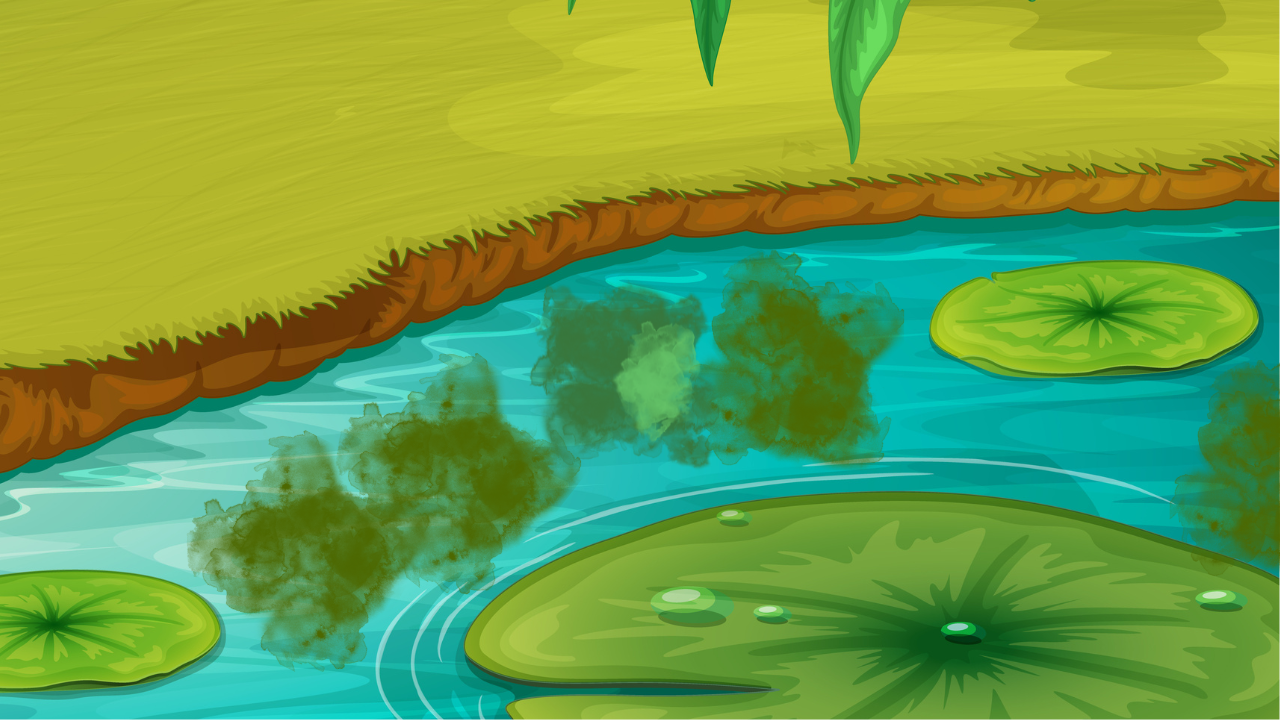Having a beautiful pond teeming with fish is a dream come true for many homeowners. However, the unsightly invasion of moss can quickly turn that dream into a nightmare. Fortunately, there are some genius hacks that can effectively eradicate moss from your pond without causing harm to your beloved fish. So, let’s dive into several methods that will help you get rid of moss and restore the natural beauty of your pond, while ensuring the well-being of your finned friends.
1. Improve Water Circulation
Moss thrives in still water, so improving water circulation can be a game-changer. Consider installing a pond aerator or a fountain to keep the water moving and oxygen levels high.
Increased circulation not only discourages moss growth but also promotes a healthier environment for your fish. Additionally, aeration prevents the buildup of stagnant water, reducing the chances of algae and moss taking hold in the first place.
2. Balance Nutrient Levels
Moss loves nutrient-rich environments, but you can thwart its growth by maintaining a balanced ecosystem. Excessive nutrients, such as organic debris and fish waste, can fuel moss infestation.
Regularly remove fallen leaves and debris using a pond skimmer or net, minimizing the available food source for moss. Introducing beneficial bacteria into the pond can also aid in breaking down excess nutrients. By keeping nutrient levels in check, you’ll create an inhospitable environment for moss while keeping your fish healthy.
3. Introduce Moss-Eating Fish
What better way to fight moss than with fish that love to munch on it? Some species, like the Siamese algae eater or the grass carp, have a voracious appetite for moss and algae. Introducing these fish to your pond can help control moss growth naturally.
However, be sure to research the specific requirements and compatibility of these fish with your existing aquatic ecosystem before adding them. A balanced population of moss-eating fish can contribute to a long-term solution for keeping moss at bay.
4. Optimize Sunlight Exposure
Moss thrives in shaded areas, so optimizing sunlight exposure can be a simple yet effective hack. Trim overhanging branches or nearby shrubs that cast shadows on your pond. Allowing more sunlight to reach the water will inhibit moss growth.
If your pond is naturally situated in a shady area, consider strategically placing floating plants, such as water lilies or lotus flowers. These plants not only add beauty to your pond but also provide natural shade, preventing excessive sunlight from reaching the water’s surface and deterring moss growth.
5. Use Natural Moss Control Products
If manual removal and other methods haven’t completely eradicated the moss, you can turn to natural moss control products. Look for products that are specifically formulated for ponds and safe for fish.
These treatments often contain natural ingredients, such as enzymes or beneficial bacteria, that target and break down moss. Always follow the manufacturer’s instructions and dosage recommendations to ensure the safety of your fish and the effectiveness of the treatment.
6. Use Barley Straw
Barley straw is a natural and fish-friendly solution for controlling moss in ponds. As the straw decomposes in the water, it releases compounds that inhibit moss growth.
Simply place a bundle of barley straw in your pond, preferably in a mesh bag, and let it do its magic. This method is safe for fish and other aquatic life, and it can provide long-term moss control when used consistently.
7. Maintain Proper Water pH
Moss tends to thrive in acidic water conditions. Monitoring and maintaining the proper pH level of your pond can help deter moss growth.
Test your water regularly using a pond test kit and adjust the pH as needed using pH-adjusting products designed for ponds. Keeping the pH within the optimal range for your fish and plants will create an environment that is less conducive to moss growth.
8. Install a UV Sterilizer
A UV sterilizer is an effective tool for controlling not only moss but also other unwanted organisms in your pond. It uses ultraviolet light to kill algae and moss spores, preventing their growth and spread.
UV sterilizers are fish-safe and can be easily installed in the pond’s filtration system. They work best when paired with proper water circulation, filtration, and regular maintenance.
9. Create a Moss-Free Zone
To prevent moss from spreading throughout your entire pond, consider creating a designated moss-free zone. This can be achieved by using a pond liner or a physical barrier made of rocks or plants.
By confining moss to a specific area, you can more effectively control and manage its growth. This method works well for larger ponds or those with complex layouts, where complete eradication of moss may be challenging.
10. Regular Pond Maintenance
Prevention is key when it comes to keeping moss at bay. Regular pond maintenance plays a vital role in preventing moss growth. Remove excess debris, fallen leaves, and decaying plant matter from the pond to reduce nutrient buildup.
Keep your pond well-maintained by regularly checking and cleaning filters, removing any dead or dying plants, and ensuring adequate water circulation. A clean and well-maintained pond is less likely to become a haven for moss.
11. Opt for Natural Algaecides
In cases where moss infestation is severe or persistent, you may consider using natural algaecides as a last resort. Look for fish-safe algaecides that specifically target moss.
These products typically contain natural ingredients like copper or plant-based extracts. Follow the instructions carefully and use them sparingly to minimize any potential impact on your fish and the overall pond ecosystem.
Bottom Line
Banishing moss from your pond without harming your fish is not an impossible task. By employing these genius hacks, you can reclaim the natural beauty of your pond while maintaining a healthy environment for your fish.
Remember, a combination of manual removal, improving water circulation, balancing nutrient levels, introducing moss-eating fish, optimizing sunlight exposure, and using natural moss control products will help you achieve a moss-free pond that both you and your fish can enjoy for years to come.






